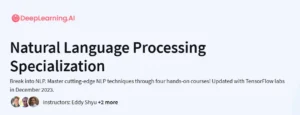What will you learn in Number Systems For Computer Scientists Course
Differentiate between number systems—decimal, binary, octal, and hexadecimal—and convert values across them
Perform binary arithmetic operations (addition, subtraction, multiplication, division) and understand two’s-complement for signed values
Explain fixed-point notation and implement basic fixed-point arithmetic in binary
Understand IEEE-754 floating-point representation, including bias, mantissa, and rounding modes
Program Overview
Module 1: Introduction to Number Systems
⏳ 10 minutes
Topics: Role of number systems in computing, overview of course structure
Hands-on: Quick quiz on identifying number-system use cases
Module 2: Decimal, Binary, Octal & Hexadecimal Conversions
⏳ 20 minutes
Topics: Place-value principles, division-remainder and multiplication-fraction methods for conversion
Hands-on: Convert sample decimal numbers to binary, octal, and hex and back
Module 3: Binary Arithmetic & Two’s-Complement
⏳ 25 minutes
Topics: Binary addition/subtraction rules, overflow detection, representing negatives via two’s-complement
Hands-on: Implement binary arithmetic exercises and validate two’s-complement results
Module 4: Fixed-Point Notation
⏳ 15 minutes
Topics: Scaling factors, integer vs. fractional bits, overflow and precision considerations
Hands-on: Encode decimal fractions in fixed-point binary and perform addition
Module 5: IEEE-754 Floating-Point Representation
⏳ 30 minutes
Topics: Sign, exponent with bias, mantissa, normalized vs. denormalized numbers, rounding modes
Hands-on: Manually encode and decode single-precision values; explore edge cases (NaN, infinities)
Module 6: Computer Storage & Encoding Basics
⏳ 10 minutes
Topics: Byte ordering (little vs. big endian), ASCII vs. Unicode character codes
Hands-on: Inspect memory dumps to interpret multi-byte values and character strings
Get certificate
Job Outlook
Embedded Systems Engineer: $80,000–$120,000/year — work on firmware where low-level number representations are critical
Compiler Developer: $100,000–$150,000/year — optimize numeric computations and floating-point code generation
Systems Programmer: $90,000–$140,000/year — build operating systems, device drivers, and performance-sensitive software
Mastery of number systems is foundational for roles in hardware design, signal processing, and high-performance computing.
Specification: Number Systems For Computer Scientists
|





